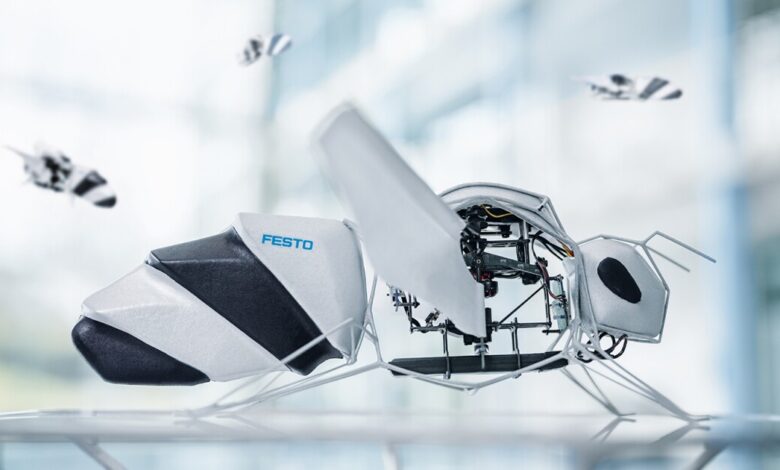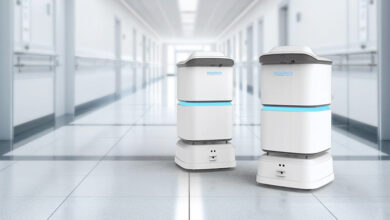Who would have thought swarming robo-bees could be so captivating?

We’ve seen some impressive nature-inspired flying bots from the creative minds at Festo’s Bionic Learning Network over the years, but the autonomous BionicBee is not only the smallest so far but also the first capable of swarming.
Around about this time every year, Festo heads to Hannover Messe to share its latest automation developments and innovations at the “world’s leading industrial technology trade show.” If we’re lucky, the company also has some fun new bots to demonstrate that take design cues from nature.
We’ve previously been enthralled by majestic flying penguins, a hoptastic kangaroo, huge dragonflies, an ultralight herring gull, a flying fox, a pipe-inspecting cuttlefish, cooperative worker ants and gorgeous butterflies that flutter around without crashing into each other. And now we have a swarm of robo-bees.
Festo BionicBee
Even though the BionicBee is Festo’s smallest flying robot, you still wouldn’t want one or more buzzing around you at a picnic as each measures 220 mm (8.6 in) in length, has a wingspan of 240 mm (9.5 in) and weighs in at 34 g (1.2 oz) – though the insectoid flyer does at least lack a sting in its tail.
Unless that picnic is indoors at Festo’s labs, you’ll be pretty safe as these bees receive signals from ultra-wideband anchors installed over two levels of a room so that they can “see” where they are within that space as they flap around. For swarming behavior, a central computer determines the flight path for collision-free formation flight.
The BionicBees were developed using generative design, where a software application was tasked with coming up with the best lightweight structure using the least possible materials while also aiming for maximum stability.
Festo
Crammed within the small frame is a brushless motor, three servos, a battery, a gear unit, comms technology and control components. The wings beat between 15 and 20 hertz, back and forth over 180 degrees. The servos “change the geometry of the wing” for lift and direction control.
Festo notes that each bot is assembled by hand and even the tiniest of differences in build can adversely impact performance. The team has therefore included an auto-calibration feature that spots any subtle hardware oddities during a brief test flight. An algorithm then makes any necessary adjustments to flight characteristics so that the control system see all bees as identical – which makes for safe swarming.
Festo launched the swarm flight of the BionicBees at Hannover Messe 2024 last week.
Source: Festo



